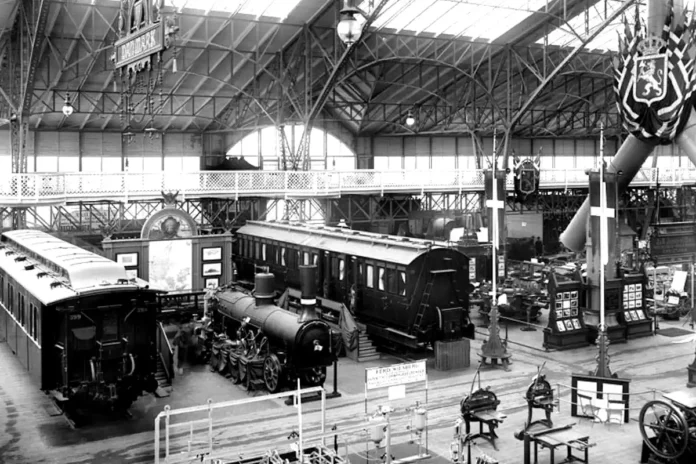The General Art and Industrial Exposition of Stockholm, or the Stockholm Exhibition of 1897, was a spectacular display of Sweden’s cultural legacy and technological prowess. During the 25th anniversary of King Oscar II‘s reign as regent, it was arranged by Crown Prince Gustaf, who would go on to become King Gustaf V.
Taking place on the charming island of Djurgården between May 15 and October 3, 1897, this World’s Fair drew an incredible 1.5 million visitors.
A spectacular display of progress
Across a huge 208,000 square meter space, the show included more than 3,700 exhibitors from Sweden, Finland, Norway, Denmark, and Russia. The show showcased an astonishing variety of innovations:
- The 100-meter-tall Industrial Hall, featuring four minarets and its recognizable cupola
- Newly developed technologies, such as moving images and contemporary bicycles
- A reconstructed medieval Stockholm, complete with the “Tre Kronor” castle
- A cinema and X-ray laboratory
Architectural marvels
Numerous buildings constructed for the show have endured as iconic landmarks:
- Djurgårdsbron: The main bridge connecting Djurgården to central Stockholm.
- Nordiska Museet: The impressive Nordic Museum, partially completed for the event.
- Skansens Bergbana: A funicular railway now part of the Skansen open-air museum.
Main themes of the exposition
The following were the primary topics of the 1897 Stockholm General Art and Industrial Exposition:
- Modern life: The exhibition aimed to showcase the latest innovations and technological advancements.
- National identity: The event celebrated Swedish culture, folklore, and industrial achievements, helping to bolster national pride.
- New media technologies: The exposition highlighted emerging technologies such as film and the phonograph.
- Art and Industry: As reflected in its name, the exhibition focused on both artistic and industrial developments.
- International cooperation: While primarily featuring Scandinavian countries, the event also included exhibits from Finland and Russia.
- Historical Heritage: The exhibition included a reconstructed medieval Stockholm, showcasing the nation’s rich history alongside modern innovations.
- Architectural innovation: Many structures built for the exhibition, such as Ferdinand Boberg’s designs, showcased new architectural styles.
The exhibition, which commemorated the 25th anniversary of King Oscar II’s reign, provided a forum for showcasing Sweden’s modernity and progress while also paying tribute to its cultural legacy.
A culinary revolution
The hot dog as street food was a new culinary delight brought to Sweden by the exhibition. Vendors, often women known as “korvmadammer,” initially served these sausages with white cotton gloves to protect customers’ hands from the heat.
Legacy and impact
The Stockholm Exhibition of 1897 had a long-lasting effect on Sweden’s cultural identity and the cityscape of Stockholm, even though many temporary structures were taken down after the exhibition. The occasion helped build Sweden’s reputation for innovation and superior design while also marking an important turning point in the nation’s industrial development.
Visitors today can take a unique trip back in time and experience the grandeur and optimism of Sweden’s industrial golden age by exploring the remnants of the 1897 exhibition.






